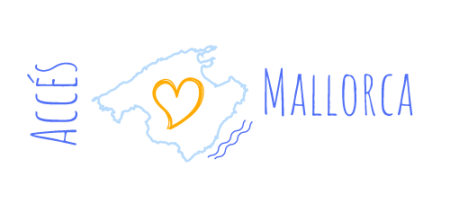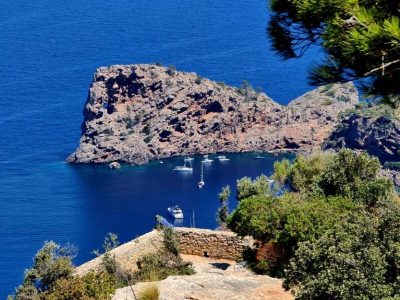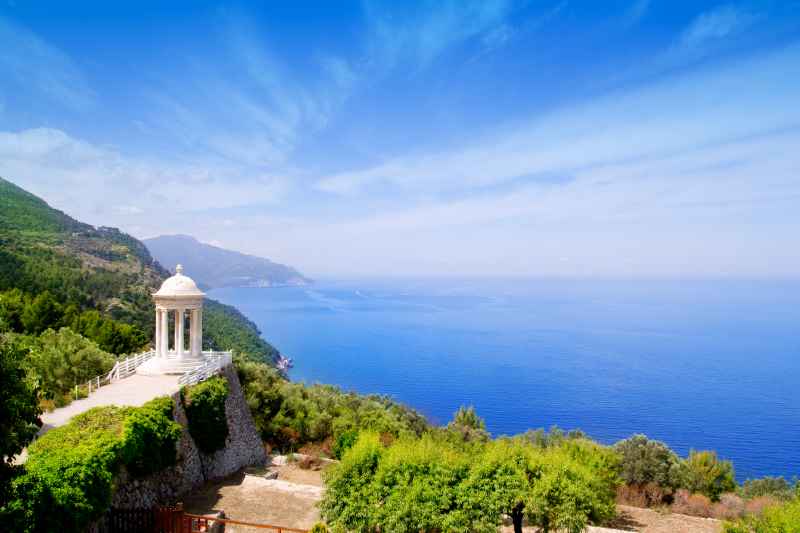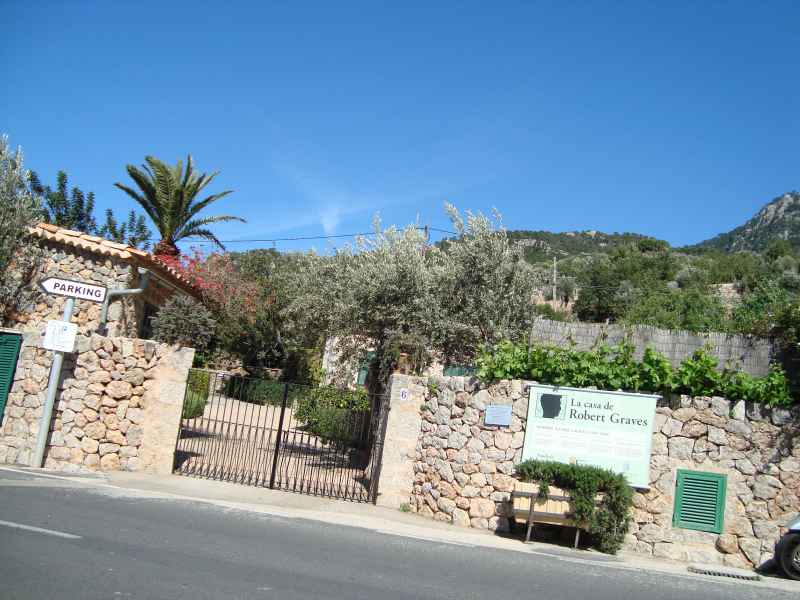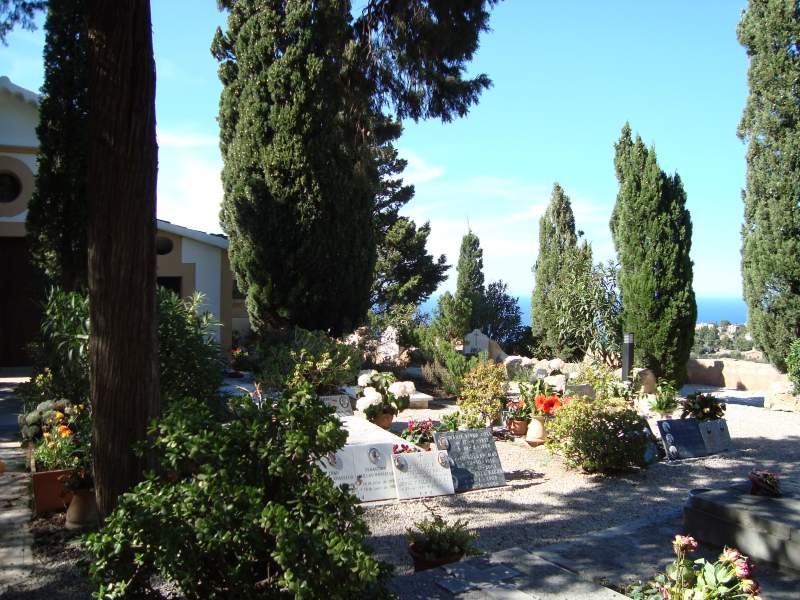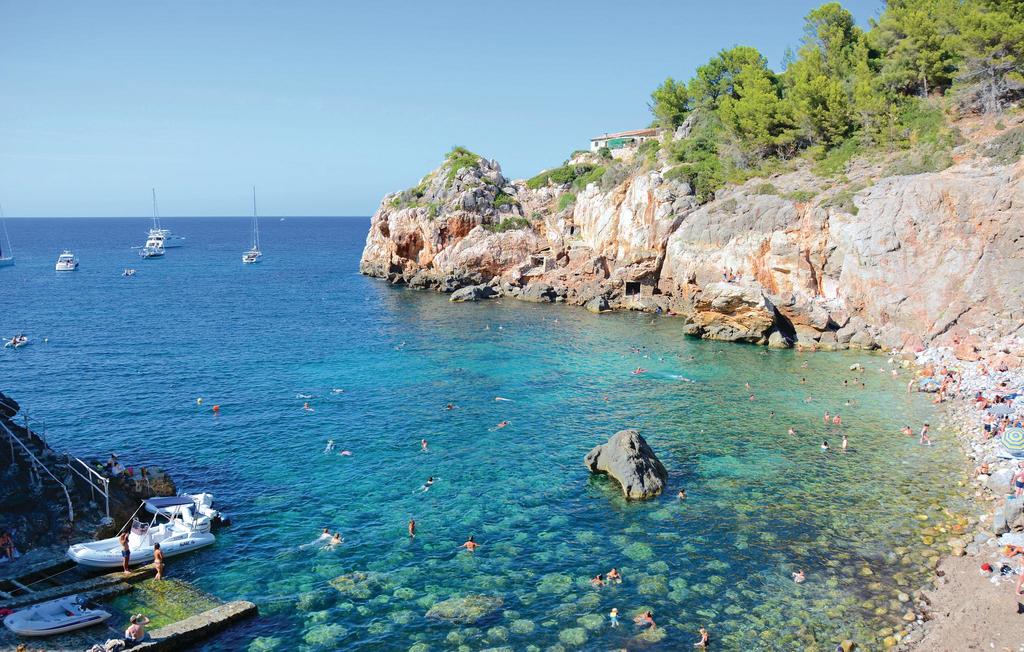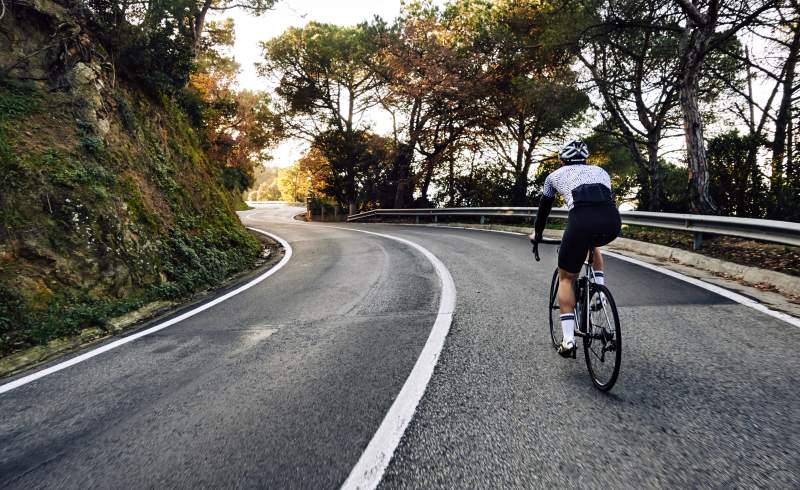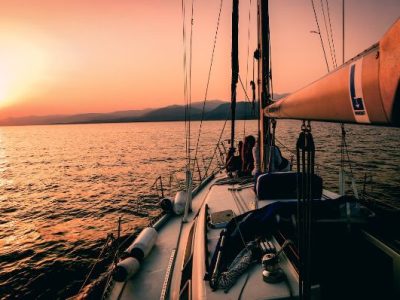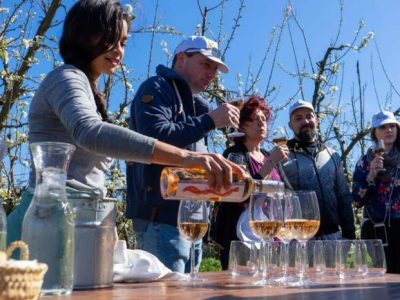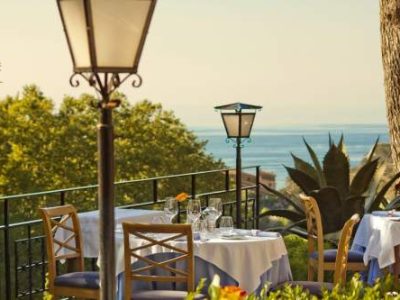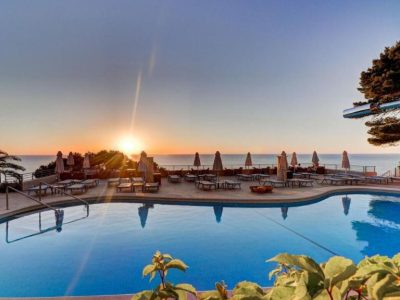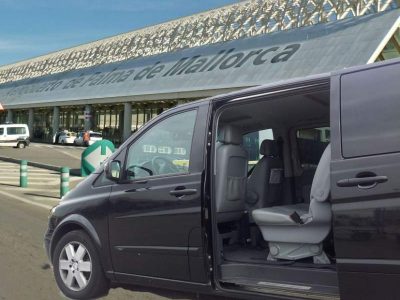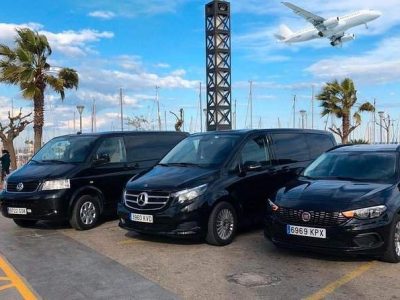All your holiday planning needs in one place, letting you book direct and benefit from official online rates
- Places To Go
- Things To Do
What’s Your Interest?
Traveling with kids
- Blog
Deià, Things to do, hotels, market
Deià is one of the most beautiful areas of Mallorca, and enjoys the most privileged location in an evergreen valley on the slopes of Tramuntana directly to the azure coast.
Due to the beautiful settings the area has to offer, Deià is one of the most popular places to get married in Mallorca, e.g. at the marble pavilion at Son Marroig or the hilltop church of Sant Joan. Deià is without a doubt one of the most romantic areas on the island, and it is almost impossible not to fall in love with it.
- I want to go!

Why visit Deià
Is Deià worth a visit?
Deià enjoys a privileged location on the coast of the UNESCO World Heritage Site of Serra de Tramuntana. The area displays a unique natural beauty that only a few other places can produce.
Beside from the beauty of the area, Deià is also home to some very romantic hotels and good eateries e.g. the famous seafood restaurant next to the scenic beach, Ca’s Patró March, known from the hit series “The Night Manager”.
Things to do in Deià
Deià has a great location when it comes to sights and tourist attractions in the mountains! Deià itself is home to the Casa Museu de Robert Graves, home of the famous writer, and the archaeological museum founded by William Henry Warden. At the highest point in Deià, the church and cemetery is located, do go and visit. The cemetery is the resting place of many famous people and the church has been the scene of several celebrity events such as the wedding of Caroline Corr.
Close by, you will find the estate of Son Marroig and the curious rocky formation of Sa Na Foradada offering breathtaking views over the coastline.
VISIT THE COASTAL ESTATE OF SON MARROIG
The estate of Son Marroig is iconic to Deià, namely because of the famous marble pavilion overlooking the azure coastline standing in front of the mansion. Son Marroig used to belong to the famous archduke, Ludwig Salvator of Austria, who is one of the most significant figures in exploring and reporting about Mallorca throughout history. Salvator turned every rock on the island to understand the unique nature of this place and wrote his renown work called “Die Balearen“, but was especially taken by the Tramuntana, which is why he bought several properties here. Son Marroig offers a unique exhibition of the archduke’s personal items, furniture and works, as well as the beautiful gardens and views over the coast.
VISIT THE HOUSE AND MUSEUM OF ROBERT GRAVES
Deià is often referred to as “village of the artists”, namely because so many famous artists have lived ore visited. One of those who lived here, was famous author, Robert Graves, who wrote several epic pieces such as I, Claudius and The White Goddess among others here in Deià. Don’t miss this opportunity to visit the home of one of the most influential authors of modern times, and explore his personal life and work station in depth. The house and museum of Robert Graves is a great attraction in Deià, and we are lucky that the foundation has made it possible to visit.
THE CHURCH OF JOAN BAPTISTA AND THE CEMETERY
In the heart of Deià rises a hill on which the church and cemetery is situated on top of. The church is a symbol of Deià’s independence and the interior preserves a remarkable Baroque altarpiece. Climbing the hill via the cobblestone path will get you to one of the most peaceful places in the area of Deià offering divine views of the valley and coastline. Stroll about on the cemetery and visit the beautiful church that has been scene to several celebrity wedding ceremonies, for example the ceremony of Caroline Corr.
THE ARCHAEOLOGICAL MUSEUM OF DEIÀ
The charismatic American painter and amateur archaeologist, William Henre Waldren, was another artist to fall in love with Deià and Mallorca. Waldren was so occupied by the Mallorcan prehistory that he built and created this small museum where he could exhibit his findings for others to enjoy.
WALK OR SAIL TO SA FORADADA
Sa Foradada is one of nature’s wonders, a curious rocky formation and islet that extends from the property of Son Marroig. Sa Foradada was the scene of a brutal battle between Mallorcans and attacking corsairs from North Africa who tried to raid the town in 1582. It was famous adventurer archduke Ludwig Salvator who created the path to this amazing place.
THE OLD WATCHTOWER OF PEDRISSA
Torre de sa Pedrissa enjoys one of the most privileged and beautiful locations in the Deià area, 270 m above sea level. The tower was built back in the 17th century as a part of a network of watchtowers that communicated via smoke signals when enemy ships were spotted in the sea. The trip to the Pedrissa tower is challenging yet very rewarding, you’ll get a chance to explore the most scenic and beautiful places of the area.
ENJOY A DAY ON THE BEACH
Cala Deià offers a wonderful and natural cove protected from most winds. Cala Deià is a small beach of stones and gravel. It measures about 70 m in length and features a small pier. Cala Deià is beautiful and very popular, which is why you might encounter large crowds of guests during the summertime.
PUT YOUR GOLFING SKILLS TO THE TEST
A short drive from Deià you will will find the Golf Son Termens, in the area of Bunyola, a beautiful and challenging 18-hole course set in a mountain valley.
DISCOVER THE TRUE BEAUTY OF TRAMUNTANA
The best way to truly experience the magic of Tramuntana is by following some of the popular hiking trails in the area. Walk to the magnificent viewpoints, hidden gems, and let yourself be seduced by the scents of the Mediterranean wildlife. Some of the most emblematic trails from Deià leads to the sa Foradada rocks and to the picturesque areas of Port de Sóller and Banyalbufar.
CHALLENGE YOUR STAMINA ON THE WEAVING ROADS
Let your self be overwhelmed by intimidation and impression, while trying to grasp what lies ahead. The weaving roads that hugs the steep cliffs, the hundreds of hairpin turns, the ascents and descents of more than 6% in gradient. Yes, cycling in Tramuntana is a challenge, but what an adventure and amazing experience! Visit some of the most places such as Port de sa Calobra, the famous Lluc monastery and picturesque village of Valldemossa, while feeling your body pumped with adrenaline.
VISIT A LOCAL ART GALLERY
Deià is known as the “Village of Artists”, a place where creativity and inspiration is found everywhere. There are multiple interesting galleries to visit in the village, such as Sa Tafona, Gres Gallery and Holló Manuella Andrada. If the selection of galleries in Deià does not suffice your hungering art-heart, head to the nearby villages of Valldemossa and Sóller and discover amazing galleries such as Ca’n Prunera and Fundació Coll Bardolet.
BROWSE THE LOCAL SHOPS
Deià is home to a nice selection of small shops hidden in the charming narrow streets of the picturesque village. The fact that they are not all lined up next to each other but rather scattered, actually enhances the shopping experience making it much more personal and you will enjoy browsing each store thoroughly much more. Shopping in the local stores is a great opportunity to bring home something unique.
IMAGE GALLERY
Enjoy some beautiful pictures from Deià
FAQ
Recommendations for accommodation in Deià include:
- Hotel es Molí
- Hotel des Puig
- Hoposa Costa D’or
Cala Deià is located not far from the village itself, but due to the mountainous landscape, a walk takes about 30 minutes. You can access the beach by car, but beware you might not be able to park here. The drive should take less than 10 minutes.
Events in Deià
Traditions and festivities in Deià
Unlike many other villages in Mallorca, Deià only celebrate two main events during the year, the festivities of Sant Joan dedicated to the patron saint and the festivities of Our Lady of August, patron saint of Lluc Alcari.
Below you can find a bit more information of the two annual traditions celebrated in Deià.
June
On June 24th, the feast of John the Baptist is celebrated as he is the patron saint of Deià village. On the day itself, the villagers gather in the parish church, which also carries protection of the saint, for a mass. However, already in the middle of June the festivities begin and a full program of fun and cultural events are on the schedule every year. You can look forward to a wide range of exhibitions, games, contests, sports and performances of dancing and music groups. Typically, there are also a range of activities specially aimed at children and elderly.
When: Mid-June
August
On August 15th, the charming hamlet of Lluc Alcari celebrate its patron saint, Our Lady of August. The day starts with a solemn mass in the small chapel followed by a series of cultural events that varies from year to year.
When: August 15th
June
Festes de Sant Joan Baptista
Every year in late June, the town of Muro welcomes the summertime with a big party. The festivities lasts for two weeks where the town is decorated in beautiful colors and the atmosphere is light and jolly. During the festivities, there are numerous splendid and fun activities to watch, such as exhibitions, gastronomic events, games, sports, concerts etc. If you are on vacation in Platja de Muro during this time, you should really consider a visit to the old town.
July
Festes i fira nocturna de la platja de Muro
In the week between July and August, the annual beach parties are celebrated in Platja de Muro. A week of fun activities for adults and children, as well as concerts and night markets are held. This is a fun event that is aimed for both locals and tourists, do not miss out.
August
Festes de ses Casetes des Capellans
In the small area of ses Casetes des Capellans (Platja de Muro), celebrates its patron saint of Sant Llorenç (Saint Lorence). It usually happens within the first fortnight of August, where you can look forward to musical performances and communal dining with more than a thousand people dining together in the streets.
September
Fira d’oportunitats a Muro
Just like the March fair, this fair is dedicated to commerce. The fair celebrates the end of the season, and therefore, all local shops meet in the central square of the town to sell their stock for reduced prices. As the name says, this fair is a great opportunity to get a good deal on various products from shoes, clothes, jewelry, equipment, crafts etc.
December
Festes i fira de Nadal
From middle December, come and celebrate the jolly time in Muro at the Christmas fair. The main square of the town is transformed into a Christmas market, and there will be a lot of activities held for children.
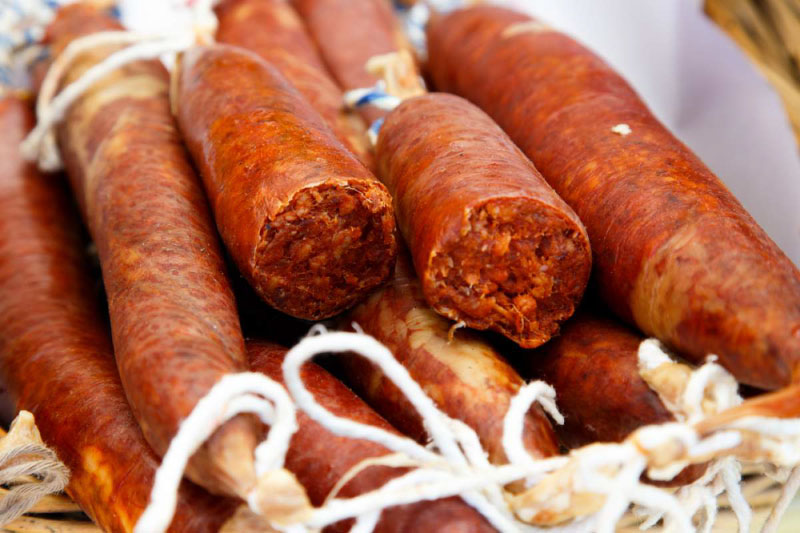
Support Local
Supporting local communities during your travels can have a profound impact. Stock up with groceries locally, stop in an artisan shop or enjoy a refreshment at a restaurant or bar. Now more than ever, these small businesses need support from travelers near and far.
Get to know the area of Deià
About Deià
Deià is a small but very charming village and municipality set in a picturesque green valley that opens to the coastline. The municipality comprise about 1,000 inhabitants divided in the five population centers; Deià village, Lluc Alcari, Ses Coves, s’Empeltada, Son Coll and Sa Cala. The municipality covers a surface of some 1,500 hectares, or 15 km2, whereof most of it (approximately 1,400 hectares) is categorized as protected area.
The name of Deia (or Deya) comes from the Moorish conquest of Mallorca, back in the 10th-13th. century. The Muslims called the area “Ad-Daya”, which simply means “hamlet”.
Deià has for long been known as a place of fine arts and culture thanks to the reputation as a retreat for artists who throughout the last two centuries has come here for inspiration. In the streets you will find a number of art galleries and local boutiques, as well as the famous Sa Fonda bar where a number of celebrities has been.
The natural beauty of the area has for years made Deià one of the most exclusive and romantic holiday destinations in Europe.
History of Deià
Below you can read the story of Deià and how the area has developed from prehistoric times to contemporary times.
Prehistory
The prehistory of Deià is closely linked to the strategic location of the area, high above sea and rich of natural resources such as water sources, fertile soil and plenty of hunting game. The first vestiges of human occupation in the area date from the Bronze Age, presumably from around the third millenium BC, when people lived in natural caves. A total of 22 artifacts and human remains has been discovered by archaeologist Mascaró Pasarius, whom highlighted the caves of Son Salvat, Sa Gravillera de Son Puig, Cova de s’Estret de Son Gallard, Cova del Dimoni, Cova de sa Torre des Moro de Miramar, Cova de Betlem, and ses Coves Negres, as being some of the most important.
Cova de Betlem, located in the stream of Deià, is famous for some unique and quite controversial engravings on the walls which has been interpreted as a hunting scene from an imprecise age.
A Chalcolithic period followed where small huts and communities started to occupy the valleys of Deià, Valldemossa and Sóller and actually made up the largest population density on the island.
The pre-Talayotic period occurred from 1700 BC to 1300 BC, a period often times referred to as the “naviforme period” due to the vessel shaped building constructions from these centuries. The first constructions of this kind can be seen in the sites of Son Oleza and Can Sel Costella (Valldemossa), where you can also find the funerary cave of La Pedrera de Son Puig.
Cova des Morts de Son Gallard is another great example from the pre-Talayotic period exhibiting a bell-shaped burial place.
In the property of Son Marroig, a pre-Talayotic burial site contained eight stacked skulls and long bones, a radiocarbon dating gave the year 1819 BC.
From around 1300 – 1100 BC, the Talayotic culture arrived in the Gymnesiaen Islands (Mallorca and Menorca), a culture characterized by the megalithic constructions built for habitation and observation. The name is adopted from Catalan, as the word “talaia” means watchtower. Although there are some remains from this culture within the municipal perimeter, the most outstanding example in the nearby area is undoubtedly the settlements found on the properties of Son Ferrandel and Son Oleza, in Valldemossa.
Next to the Es Ripoll water reservoir, on the slope of Es Picons, a deposit of ceramics from around the 5th century BC was discovered. The deposit included fragments of amphorae of Greek-Italic and Punic-Ebusitan origin.
The Roman epoch
Around 123 BC, Roman general Quintus Caecili Metellus captured the archipelago from the indigenous peoples and remaining Phoenicians still living here. After an arduous quest to find hunt down and find the indigenous inhabitants who had retrenched themselves in the Talayotic settlements, the Roman army could call themselves victorious. Metellus was awarded the title of consul and given the nickname “Balearicus”.
The Romans established the two major cities Palma and Pol-lèntia, whereof the latter was the biggest and most important. However, many of the Talayotic settlements coexisted with the new Roman rulers of the island. It is most likely that the indigenous people were taken as slaves and worked with agricultural activities introduced with the re-population of the new rulers. It was in fact during this time the Mediterranean triad arrived on the island:
- Grapes
- Grains
- Olives
One of the largest Roman occupations in present day Deià, was the settlement of Son Rul.lan where amphora and fragments of tegulas were found. But there were several other settlements occupied during the Roman epoch, including the one on the small hill south of Castell des Moro where ceramics and fragments of amphorae were found. Lastly, at a location known as “Cota 264” a vegetable degreaser and Roman ceramics were found.
The Moorish times
Following a series of centuries without belonging to any kingdom, emirate or empire, the Balearic archipelago came under Moorish rule in the 10th century. Nobleman Iṣām al-Ḫawlānī discovered the archipelago during a pilgrimage to Mecca when he had to take cover during a great storm. When he returned home, he asked Emir Abdullah ibn Muhammad al-Umawi to capture this archipelago so that it could be annexed to the Emirate of Cordoba. Iṣām al-Ḫawlānī himself commanded the fleet that set sails towards the Balearics. In the time between 902 and 903, Mallorca was successfully captured and Iṣām al-Ḫawlānī was awarded the title of walí (governor) of the Illes Orientals de l’Àndalus.
Following the annexation to the Emirate of Cordóba, Medina Mayurqa (present day Palma) soon grew to become one of the most prosperous harbors in the western Mediterranean basin, especially because of the trading and piracy activities.
The re-population by tribes and clans brought a true agrarian lifestyle to the islands, along with new crops such as rice and artichokes. The agricultural Moors lived in cottages and farmsteads scattered over the countryside, in administrative districts known as “ajzà” (singular. juz) in order to be able to pay taxes to the capital, in other words a fiscal and societal system was introduced. The area here was called “Ad-Daia“, which simply meant hamlet. The largest and most importand farmstead during the Moorish rule, was the one of “Haddayan“.
Ad-Daia belonged to the Juz’ de Musuh-Bunyola, an administrative district which also comprised Bunyola, Valldemossa and the eastern parts of Esporles. In Ad-Daia, the Moors built stone terraces on the slopes of the mountains, just like those seem other places in the Tramuntana such as Banyalbufar, which allowed for effective irrigation by transporting the water. These stone terraces known as “marjades” have been catalogued as World Heritage by UNESCO and is still used today to cultivate organic crops.
The conquest and modern age
In 1229, Mallorca was officially conquered by King Jaume I of Aragón, although many areas including Deià was not completely captured until 1231. King Jaume had gathered an army of more than 20,000 soldiers and horsemen and made a pact with church, lords and knights to divide the island among them once the campaign was successfully over. Medina Mayurqa was under Catalan-Aragonese siege for three months, between September and December 1229, during which the city was bathed in Moorish blood as the soldiers sacked and killed as they made their way through the streets. Those Moors that was not killed, fled to the Tramuntana and Llevant mountains to take refuge. It was during the second campaign that Jaume’s troops were able to enter the Tramuntana range where they found the final resistance in the fortified stronghold of Almellutx (present day Escorca) and Castell del Rei (Pollenca).
The area of Deià was given to Jaume’s uncle, Nunó Sanç, count of Roussillon and Cerdanya, a fact stated in the “Llibre del Repartiment de Mallorca” (Book of Distribution of Mallorca), a chronicle documenting how the lands of the island was divided. According to a promise Jaume had given the abbot of the Santa Maria de Poblet, in Catalonia, some lands of the Moorish farmstead of Haddayan was assigned the Cistercian order where the monastery of Ca l’Abat was constructed. The Cistercians also received the Miramar property in Valldemossa, the lands of La Granja in Esporles and the royal monastery of La Real in Palma.
Following the death of Nunó Sanç in 1242, Deià came under administration of Valldemossa, while at the same time, the abbot of the La Real kept the jurisdiction of his lands. Whenever a dispute occurred, the mayor of Valldemossa and abbot of La Real would argue over who had the final saying and complained to the governor of Mallorca.
In 1526, on August 6th, the history of Deià saw a major turning point. On this exact day, the townspeople of the village erected a church on a nearby hill to which the bishop of Mallorca sent a priest to serve them. The church was too a message to the governor that the people of Deià demanded an independent administration free of Valldemossa. Of course, the mayor of Valldemossa was opposed to the idea and went to the governor himself to ask him to refuse the request. A prolonged litigation of 57 years followed, as the possibility of segregating the two was troubled by economical factors. One of the main issues that made it difficult to segregate the two, was the fact that a lot of the major properties of Valldemossa, many of them that can be spotted in the valley looking from the La Miranda vantage point, belonged to the nobility of Palma and therefore did not contribute with taxes. At that time in Mallorca, it was customary that you would only pay taxes where you lived.
However, on November 7th, 1583, the inhabitants of Deià was gathered by the church to hear the sentence, that the segregation of the two had been verified by the governor. Today, on the front wall of the church there is a plaque that commemorates those people who made it possible that Deià is an independent town and municipality.
In 1582, North African corsairs attempted to gain access to the area when they anchored in the cove of Cala Deià. The corsairs counted 150 men, but were defeated by only 50 Mallorcans commanded by Captain Mateu Sanglada, whom organized his men around the Sa Foradada islet. Throughout the 16th century, Mallorca and Menorca was harassed by corsairs of the Ottoman empire that was trying to gain control of the entire Mediterranean. As a direct consequence of this episode, the watchtower of Pedrissa was erected to protect the coast and communicate with other watchtowers along the coastline.
In the centuries that followed these events, Deià continued to grow as an agricultural area devoted to cultivation of mainly olives and citrus fruits. However, the area too engaged in livestock (pigs), lime and charcoal burning and wheat. During the 19th century, fishing too became an important activity and fish was transported to the market in Palma. Up until the ravage of the feared Phylloxera that hit Mallorca around 1890, there was more than 31 hectares of vineyards in the area. At a point, the population exceeded 1,500 inhabitants.
In 1867, archduke of Austria Ludwig Salvator arrived on the island on a journey to do scientific studies. The journey was sponsored by the emperor, whom granted Salvator the steam yacht “Nixe”, and allowed him to skip the traditional military education. Salvator was fascinated by nature, landscapes and environments in the Mediterranean region. His attention was aimed solely on little-known and undiscovered places over typical cultural centers like capital areas. At the time of his arrival, Mallorca was, believe it or not, a very little-known place in the Mediterranean Sea.
Two years later, in 1869, Salvator published the first volume of his masterpiece “Die Balearen” (The Balearics), a work comprised by 6,000 pages of stories and pictures taken from all over the Balearic archipelago. The works of Salvator was dedicated to Emperor Franz Joseph, and brought him a gold medal at the World Exhibition (Exposition Universelle) in Paris in 1878. The works included the most remarkable details he found during his trips including animal and plant species, meteorology, history, folklore, architecture, landscapes, as well as cultural heritage experienced through conversing with the locals of the islands.
Salvatore went from fascinated to obsessed with Mallorca, the wild nature and kindness of the local inhabitants impressed him so much that in 1870 he purchased the Son Marroig estate which he chose as his primary domicile and to where he had a pavilion brought from Calabria, Italy, built in pure marble, which he used for writing and reflecting. Over the course of the following 30 years, Salvator acquired properties along the coast between Deià and Valldemossa, actually, he ended up owning a strectch of no less than 16 kilometers. The fascination with the wild nature and heritage of Mallorca made Salvator a protagonist in tourism, even before tourism was a thing. Beside from his written works, he also set up the guesthouse of Ca Madó Pilla, where he offered visitors three whole days of lodging free of charge just so others too could see the natural beauty of this island. He even created paths leading from the coastline to the mountain of Teix, on which he established many of the “miradors” (vantage points) with a platform and bench to enjoy the breathtaking views and sunsets. Many of these vantage points created by the archduke are still here today and great stops when hiking in the mountainous area.
Contemporary
Ludwig Salvator was far from the last foreign prominent name to visit or live in Deià. English poet and novelist Robert Graves, was one of the first European foreigners to settle in the village in the 20th century. With Laura Riding, Graves started the printing and publishing company, Seizin Press in the 1930’s. Graves returned after the war and stayed in Deià until his death in 1985. He used the village as the setting for many of his stories, including the historical novel “Hercules my Shipmate”. His house is now a museum open to the public and well worth a visit.
Anaïs Nin visited the village in the 1920’s, where she wrote several short stories based on the settings of Cala Deià. Spanish author Carme Riera recently wrote a short story about Nine’s short stories and how she found inspiration in this particular area. The village is also the unnamed destination for Uruguayan writer Cristina Peri Rossi’s “The Ship of Fools”.
Richard Branson, British entrepreneur and businessman behind the Virgin company, bought a luxury estate in Deià which he transformed into a 5-star luxury hotel under the name “Belmond La Residencia”.
In the heart of the village, the bar Sa Fonda has been venue for many famous musicians such as Kevin Ayers, Robert Wyatt, David Allen. Mick Jagger, Mark Knopfler, Mike Oldfield and Caroline Corr. Much of Fionn Regan’s third studio album, “100 Acres by Sycamore” was inspired by his time in Deia. Caroline Corr was also married in the beautiful Joan Baptista church.
It is not without reason that Deiá is often referred to as “Village of Artists” – perhaps you are the next name to have found inspiration in Deiá?
Practical Info
Useful Numbers
Emergency: 112
National police: 091
Local police: 092
Guarda civil: 062
Fire: 080
Maritime emergencies: 900 202 202
Town Hall: +34 971 639 077
Public Transport
Bus lines: 210
Power Supply
220V
